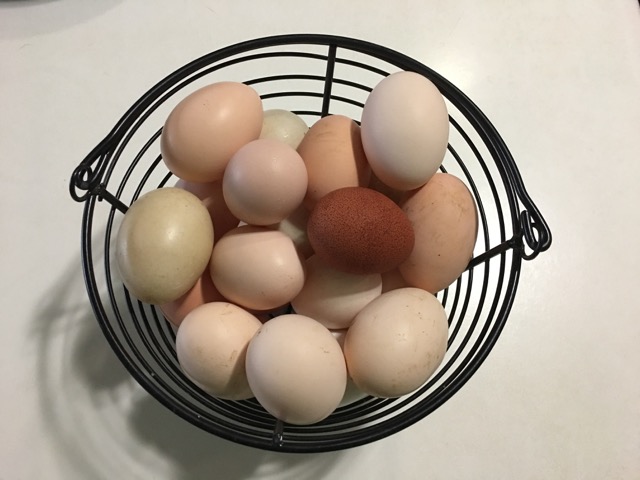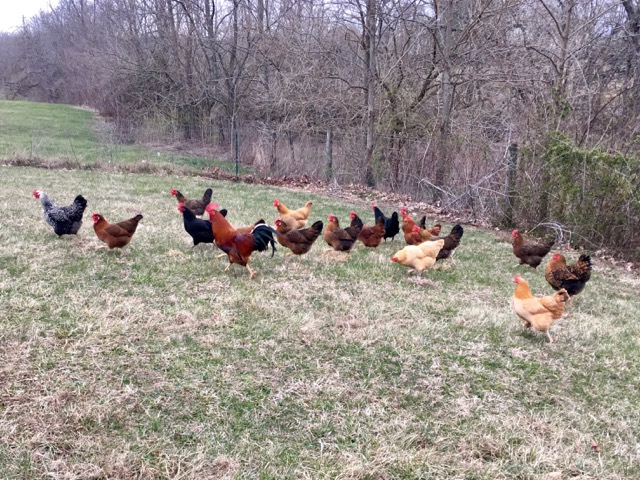
Today is the first official day of Spring, even though it’s felt springlike for several weeks (well, except for the recent cold snap). The days are growing longer, meaning there will be more time for the animals to forage. It also means that the chickens and ducks are laying up a storm!
Winter is difficult for farmers in many ways. One of the challenges for those who raise poultry and waterfowl for eggs is the lack of daylight, which can cause egg production to drop dramatically. There are ways to stimulate egg production (like using lights to extend “daylight” hours), but we lean toward letting the animals do what they naturally do, even if that means fewer eggs during the winter.
As you can imagine, it is a joyous occasion when you get that first duck egg after months of no eggs, and it’s also fantastic when chicken egg production doubles or even triples. Our newest layers have also begun laying consistently, so we’re getting lots of pullet eggs, too. In short, it’s an egg extravaganza around here. We even had to buy a much larger egg collection basket to hold all the eggs we’re getting!
With longer days upon us, the chickens should continue to lay well through summer and into fall. The ducks are a little different: currently, the bulk of our layers are Muscovy, and they will lay enough eggs for a clutch, then stop. Once they go “broody” (ready to hatch eggs), they stop laying eggs and will try to hatch any eggs in the vicinity – duck, chicken, rabbit, basically whatever is in the nest box. They are extraordinarily dedicated to incubating their eggs and remarkably successful at it. Muscovy ducks are better than the incubators we use – they control humidity and temperature flawlessly. We haven’t had a duck hatch any chicken eggs, though, because it seems like it would be pretty confusing for both parties when the duck tries to show the chicks how to swim. Ducklings, on the other hand, are ready to swim from day 1, but only in shallow dishes they can easily get out of – ducklings aren’t born with waterproofing and can become chilled or drown when they’re very young. We just use the bottom “tray” part of the spill-prone chicken waterers we used to use in the brooder as their early swimming pools. We try to repurpose when possible, so we end up saving items like the waterer tray that we might otherwise have tossed. You just never know when it might come in handy…
It gladdens our hearts to see our chickens and ducks roaming the pastures, finding the early grasshoppers and tender greens that enrich their eggs. Our flocks are only secured at night to protect against the foxes, owls, coyotes, and other night predators with a taste for pastured chicken or duck that skulk in the darkness…during daylight hours, they’re out and about. Thankfully, the hawk activity seems to have slowed down, and we haven’t seen that pair of foxes in several months, so the ducks and chickens can fully enjoy free ranging. More forage = even tastier eggs!

We have duck eggs in the incubator and expect to have ducklings in roughly a month (we set these eggs before we realized at least 2 of the ducks were broody, of course). If you’re looking for the ideal homestead duck, consider Muscovy – they’re charming, quiet, very hardy, and excellent foragers, as well as unequalled incubators. Some people even liken Muscovy to dogs: they wag their tails, will come to you to see what treats you may have, and are generally very curious creatures.
